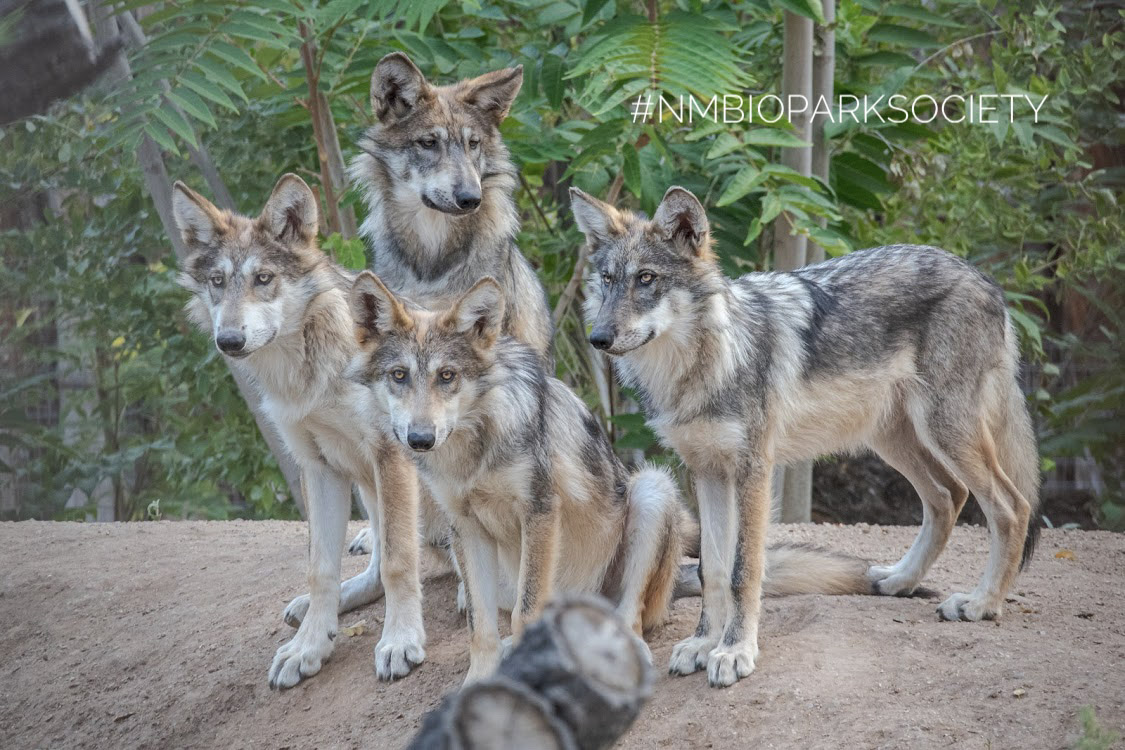Dave Parsons is a retired wildlife biologist who worked for the U.S. Fish and Wildlife Service for 24 years, during which he oversaw the Mexican wolf recovery program. He serves on Project Coyote’s Science Advisory Board.
Michelle Lute, PhD, is Project Coyote’s National Carnivore Conservation Manager, and received her PhD studying human-wolf coexistence.
Science must inform the recovery of the critically endangered Mexican Gray Wolf.
The federal government predator eradication programs began in the early 1900s and by the mid-1900s, they had been effective in killing all Mexican gray wolves, or lobos, in the wild throughout their entire historic range in the southwestern U.S.
The Endangered Species Act was passed just in time to save the southernmost — and most genetically distinct — subspecies of gray wolf in North America from certain extinction.
Following years of captive breeding by only 7 surviving founders, analyses of release sites, development of reintroduction proposals and public reviews, the first eleven lobos were released into the Apache National Forest in eastern Arizona in 1998.
Since then, about 150 Mexican gray wolves have been released, and the current wild population inhabiting suitable habitats in Arizona and New Mexico was estimated to be a minimum of 186 at the end of 2020.
The two main threats to this population are limited genetic diversity and excessive human-caused mortality. The future of lobos is uncertain.
Tragically, the U.S. Fish and Wildlife Service (USFWS) determined in 2015 that the only U.S. population of lobos was not essential to the recovery of the species, thereby blocking much-needed ESA protections, including designating critical habitat, for this species on the brink.
In 2018, a Federal court found that the 2015 rule did not rely on the best available science and violated the Endangered Species Act by failing to conserve the endangered lobo.
In June 2020, we explained to the USFWS that a legally sufficient, science-based management rule would:
- designate the only U.S. population of Mexican gray wolves as essential to the continued existence of the species in the wild,
- lead to a distribution and population size that achieves ecological effectiveness,
- ameliorate the crisis of declining genetic diversity,
- limit human-caused mortality, and
- include firm requirements to prevent conflicts with livestock using non-lethal resolution methods.
Remarkably, the proposed revision is not substantially changed from the 2015 rule and fails to adequately address issues raised in the 2018 Court Order.
It is clear that the USFWS ignored our thorough comments in the past as well as the scientific analysis of independent experts with their proposed revision to the 2015 rule, which was published last November. We worked with partner organizations through the Lobos of the Southwest coalition to raise awareness and drive more than 81,000 comments on the proposed revision during the 90-day public comment period that ended on Jan. 27.
In collaboration with the Rewilding Institute (TRI), we submitted extensive comments and recommendations for bringing the rule into compliance with the court order and rendering it science-based and sufficient to ensure recovery and long-term sustainability of the lobos (which can be read in full here).
Mexican gray wolves will remain at risk of extinction under the rule USFWS proposed. Remember, a judge ruled that the original 2015 rule was not based on the best available science, would not further the conservation of Mexican wolves, and was inappropriately linked to a non-binding, discretionary recovery plan which shirks responsibility and calls for nearly a third of the necessary recovery to occur in Mexico. This rule fails to ensure the survival of these wolves.
While wild Mexican gray wolves are not as abundant as they need to be, one thing is abundantly clear: Mexican gray wolves will remain at risk of extinction under this not-so-new version of the proposed rule.
To learn more about the plight of the lobos in the Southwest, check out TRI’s The Saga of the Mexican Gray Wolf (el Lobo). We’ll be in touch with next steps when USFWS publishes their final rule, slated for completion by July 1.
* * *
You can help save the Mexican gray wolf!
Join David Parsons for a conversation about the history,
issues, and future of lobos in the Southwest during “The Saga of El Lobo – A conversation with David Parsons about the Issues and Future of the Endangered Mexican Gray Wolf,” hosted by the New Mexico Museum of Natural History and Science from 5-6:30 p.m. PT on Thursday, March 3.
Please stay engaged and speak out in support of the conservation and recovery of our iconic and ecologically essential lobos.




